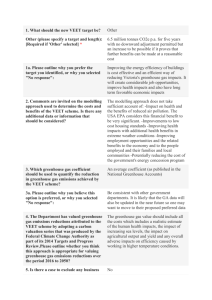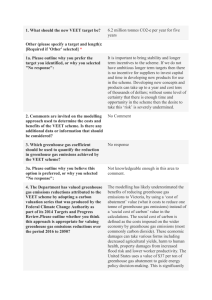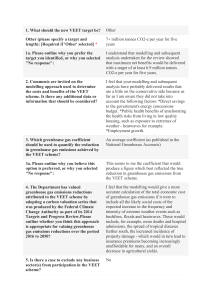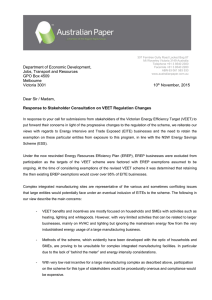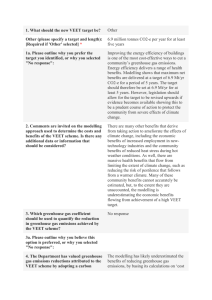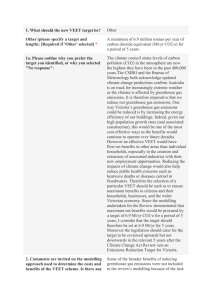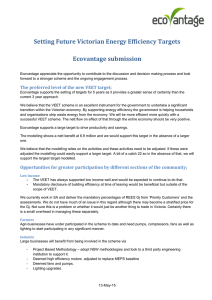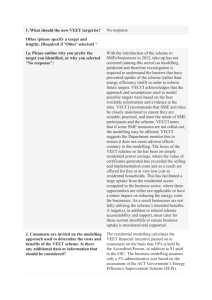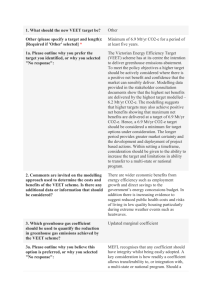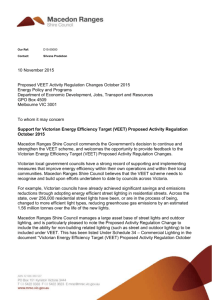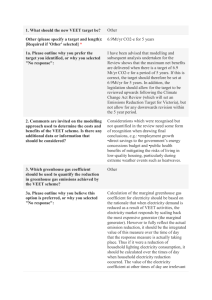Flanagan Peter (DOCX 16.95 KB)
advertisement
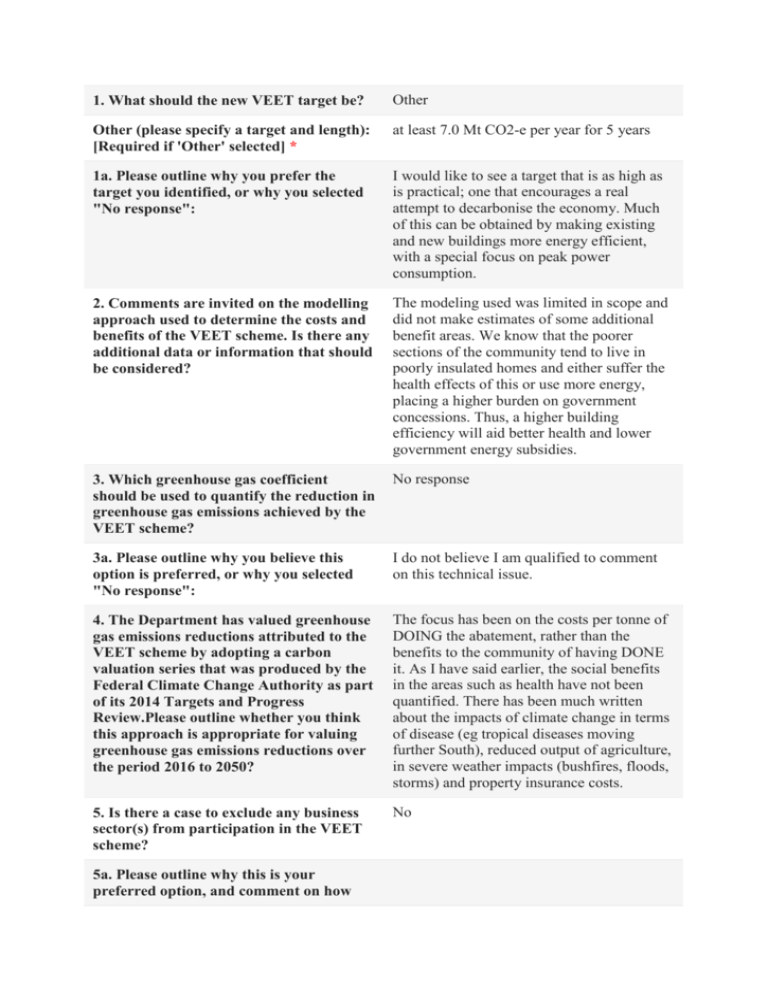
1. What should the new VEET target be? Other Other (please specify a target and length): [Required if 'Other' selected] * at least 7.0 Mt CO2-e per year for 5 years 1a. Please outline why you prefer the target you identified, or why you selected "No response": I would like to see a target that is as high as is practical; one that encourages a real attempt to decarbonise the economy. Much of this can be obtained by making existing and new buildings more energy efficient, with a special focus on peak power consumption. 2. Comments are invited on the modelling approach used to determine the costs and benefits of the VEET scheme. Is there any additional data or information that should be considered? The modeling used was limited in scope and did not make estimates of some additional benefit areas. We know that the poorer sections of the community tend to live in poorly insulated homes and either suffer the health effects of this or use more energy, placing a higher burden on government concessions. Thus, a higher building efficiency will aid better health and lower government energy subsidies. 3. Which greenhouse gas coefficient should be used to quantify the reduction in greenhouse gas emissions achieved by the VEET scheme? No response 3a. Please outline why you believe this option is preferred, or why you selected "No response": I do not believe I am qualified to comment on this technical issue. 4. The Department has valued greenhouse gas emissions reductions attributed to the VEET scheme by adopting a carbon valuation series that was produced by the Federal Climate Change Authority as part of its 2014 Targets and Progress Review.Please outline whether you think this approach is appropriate for valuing greenhouse gas emissions reductions over the period 2016 to 2050? The focus has been on the costs per tonne of DOING the abatement, rather than the benefits to the community of having DONE it. As I have said earlier, the social benefits in the areas such as health have not been quantified. There has been much written about the impacts of climate change in terms of disease (eg tropical diseases moving further South), reduced output of agriculture, in severe weather impacts (bushfires, floods, storms) and property insurance costs. 5. Is there a case to exclude any business sector(s) from participation in the VEET scheme? No 5a. Please outline why this is your preferred option, and comment on how this should be implemented: 5b. Please outline why this is your preferred option: I believe that many projects looking at improving energy efficiency will actually reduce the ongoing costs and provide a good return on investment to businesses doing them. This is especially the case as the cost of energy continues to rise. I would suggest that the scheme focus on new investment, rather than rewarding those who have made a business decision in the past without this support. New investment will also add to jobs and economic activity. 6. Should the VEET scheme be amended to better ensure support for low income households? Yes 6a. Please outline how the VEET scheme could better support low income households, and comment on why this option should be preferred: Low income households and renters tend to miss out. Landlords do not have sufficient incentive to upgrade their properties, and renters do not have an incentive in donating capital to them. Low income households do not have the spare money to finance home improvements in their own homes anyway. I would like to see targeted incentives and also for rental properties a minimum standard set, to ensure that all houses are fit for the purpose. 6b. Please outline why this is your preferred option: 7. In addition to expanding the range of energy efficiency activities available in VEET, should any other action be taken to target participation by certain groups? Yes 7a. Please outline the actions you believe should be taken: Some relatively higher income families live in large energy inefficient homes. Such were the designs with large open spaces and cathedral ceilings. I would like to see more done here to assist people make their houses more efficient. 7b. Please outline why no other action should be taken, or why you selected "No response": 8. Please suggest up to five activities that should be prioritised for revision or Given that the price of natural gas is rising rapidly, it may be that phasing out introduction to the VEET scheme. Please outline why you believe these activities should be prioritised. discrimination that favours gas over electricity might be appropriate (eg boosters for solar hot water, reverse cycle airconditioners for heating). Also, I would like to see the extent to which previous schemes achieved a substantial take up in insulation and replacement of old inefficient appliances. Perhaps wall insulation in old weatherboard houses and double glazed windows could now be encouraged. 9. Please suggest up to three changes which should be made to improve the VEET scheme. Please outline why you believe these changes should be a priority. The VEET scheme has encouraged a number of initiatives into households, but has the right mix been adopted in each case ? Perhaps an "audit" approach might be useful in looking at what would deliver the best returns for a given property and the specific initiatives that could be done at the same time, involving the same technical specialists.
